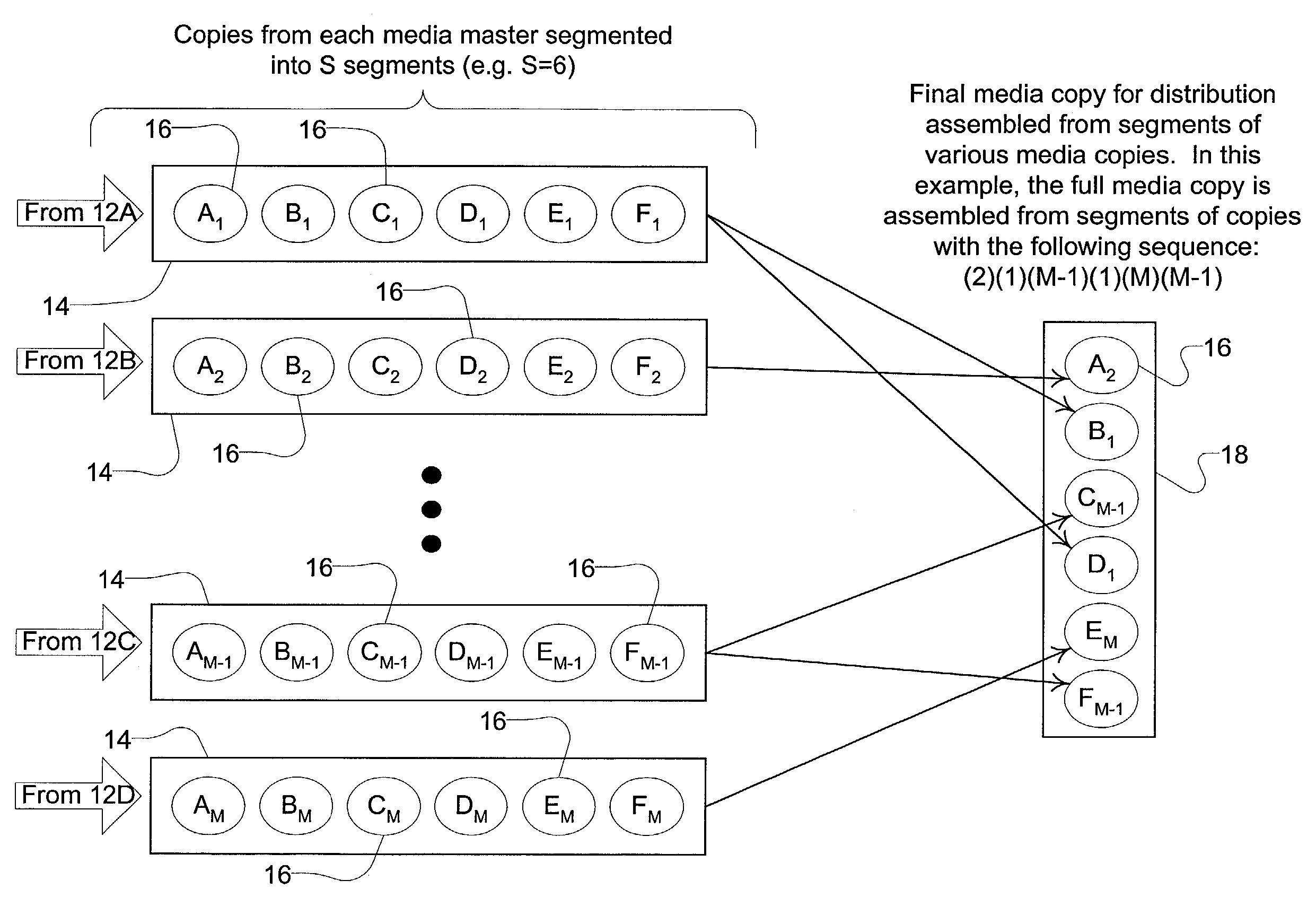Methods and apparatus for uniquely identifying a large number of film prints
a technology for identifying a large number of films, applied in the field of methods and apparatus for tracing unauthorized duplication of media assets, can solve the problems of mass duplication of certain types of media, and inability to produce hundreds or thousands of unique copies,
- Summary
- Abstract
- Description
- Claims
- Application Information
AI Technical Summary
Benefits of technology
Problems solved by technology
Method used
Image
Examples
Embodiment Construction
[0015]The production of many uniquely identifiable media copies from only a few different master copies relies on placing marks on the media, and upon the combinatorial nature of an assembly of a complete media from media partitions or a number of segments. Given M uniquely marked copies of the full media asset (such as a movie), where the media asset is divided into S segments, it is possible to create MS uniquely identifiable versions (i.e. distribution media copies) of the media asset as described in more detail below.
[0016]Referring to FIG. 1, the method for producing many unique copies of an original work by marking only a small number of masters initially involves a marking step 2. In general, the masters are duplicates of an original work with a common presentation content. During this step, the masters are marked with a unique identifier. The scope of the marking must be sufficient to permit a distinction between segments or partitions of one master from the corresponding se...
PUM
 Login to View More
Login to View More Abstract
Description
Claims
Application Information
 Login to View More
Login to View More - R&D
- Intellectual Property
- Life Sciences
- Materials
- Tech Scout
- Unparalleled Data Quality
- Higher Quality Content
- 60% Fewer Hallucinations
Browse by: Latest US Patents, China's latest patents, Technical Efficacy Thesaurus, Application Domain, Technology Topic, Popular Technical Reports.
© 2025 PatSnap. All rights reserved.Legal|Privacy policy|Modern Slavery Act Transparency Statement|Sitemap|About US| Contact US: help@patsnap.com



